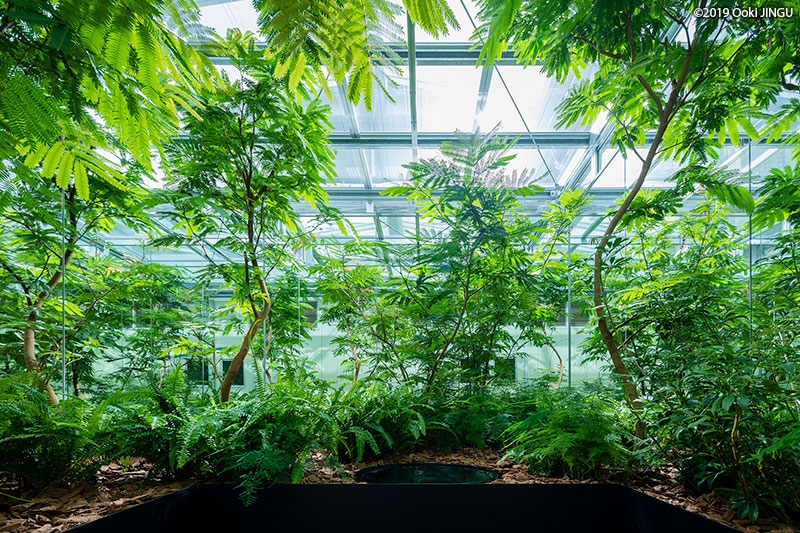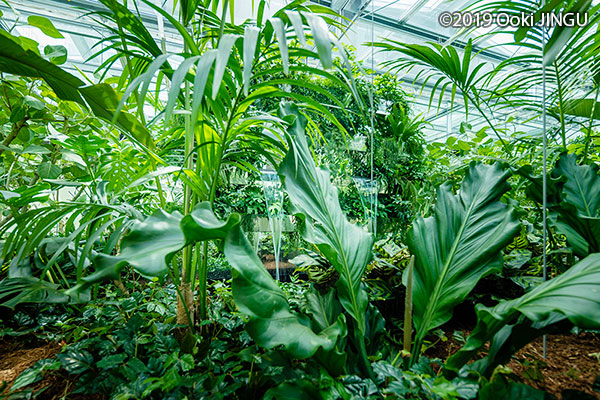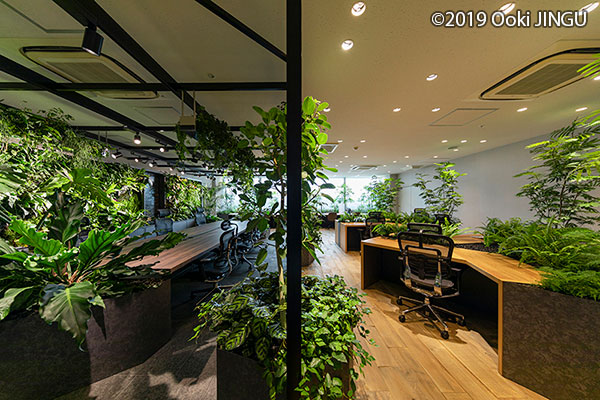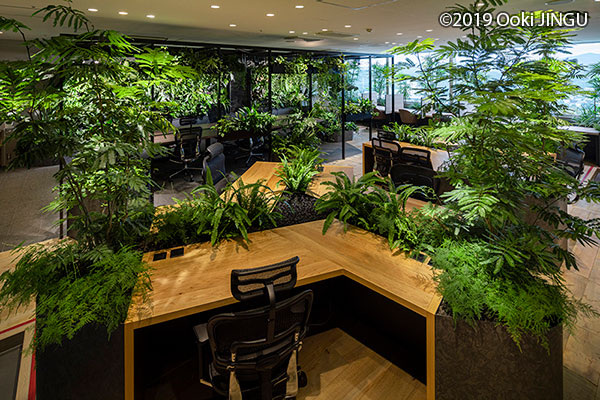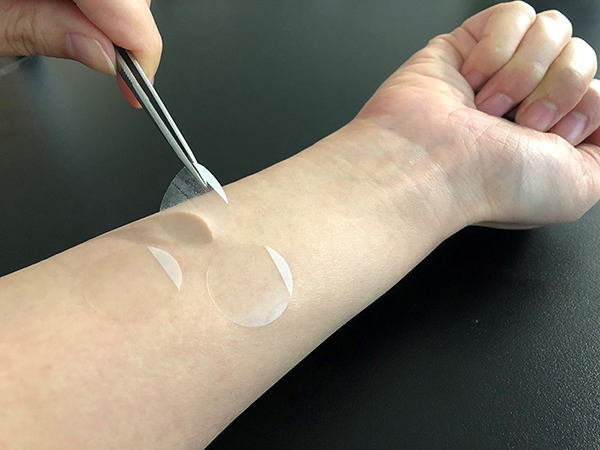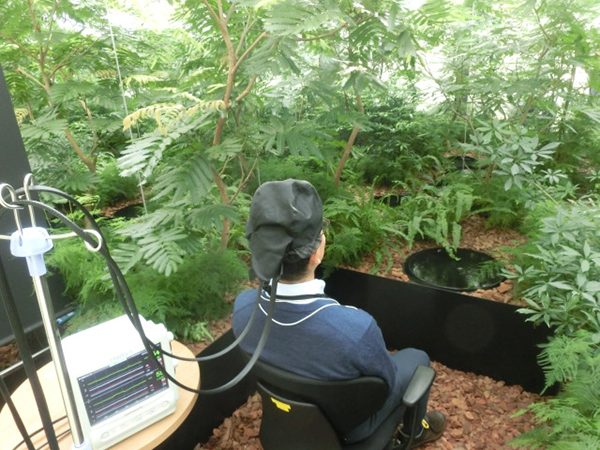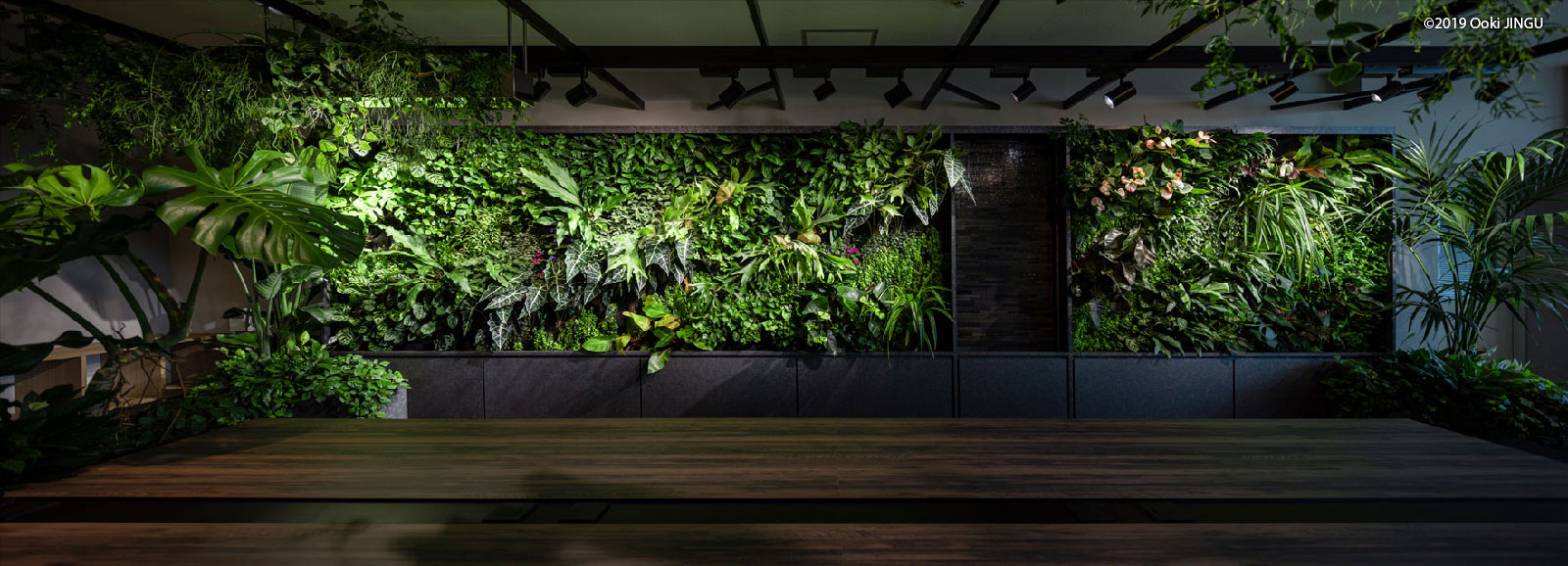
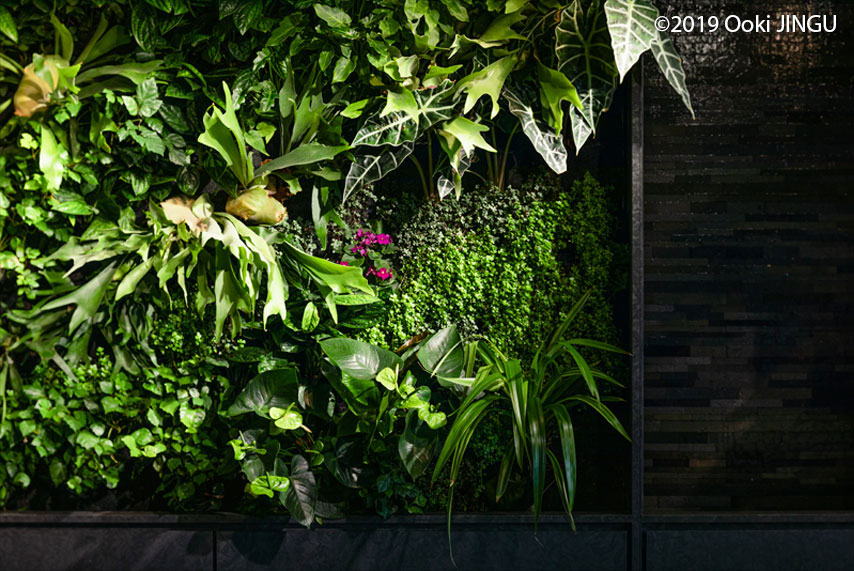
December 22, 2020
Genki-Kûkan™ Research Initiative (Part 1)
Reproducing slices of nature in the laboratory
The mission of Toyota Motor Corporation (Toyota) is to provide products and services that bring well-being to people around the world. In one of these initiatives, it is developing spaces that improve mental and physical well-being through the Frontier Research Center and the Toyota Central R&D Labs. (TCRDL) . It is currently creating unique spaces within its head office laboratories that reproduce slices of nature. With the aid of various measurement technologies, it is working to verify the effects on humans of a range of environmental factors, including plant colors and shapes, and microorganisms and chemical substances in the air.
We spoke to Chikara Ohto, Masayoshi Muramatsu and Kenro Tokuhiro, members of this research project, about the work they are doing to scientifically understand the power of nature, which is extremely important even if people remain unaware. The team is trying to determine if reproducing nature in actual living spaces could provide greater mental and physical benefits to people around the world.
Q. Why is an automaker involved in the study of spaces?
Ohto:
Toyota is in the process of transforming itself from an automobile manufacturing company into a mobility company that delivers all kinds of mobility services to people throughout the world. It might be a big step forward, but we consider mobility itself to be part of the spaces through which people move, so we are studying spaces because we want to bring new value to these spaces.
Q. What exactly is a Genki-Kûkan™?
Ohto:
Nature is known to have beneficial effects for people in terms of relaxation, fatigue reduction, and insomnia relief. As part of our research, we considered the possibility of improving happiness and concentration, and lifting people’s spirits, simply by spending time in offices and living spaces that provide the same effect as being in a natural forest. Genki in Japanese means health, happiness and energy, and Kûkan means space , so we decided to name these spaces Genki-Kûkan™ because they have the potential to improve the mental and physical well-being of people.
Tokuhiro:
Until now, they have been studying on field research, which means going out into nature and measuring the effects that it has on people. With field research, they have to deal with the natural environment, so it is not possible to control the various elements than can have an impact on mental and physical well-being, such as temperature, humidity, wind, light, and the plants and the microorganisms that exist in nature. Also, the stresses of actually going out into nature, that can impact the mental and the physical aspects of test participants. In this respect, field research has its limitations.
Ohto:
The Frontier Research Center has solar-based climate-controlled greenhouses, measuring 3 meters wide by 5 meters long and 3 meters high, where we can control temperature, humidity, wind and light. We are reproducing slices of nature in these greenhouses and studying their effects on mental and physical well-being.
Q. What kind of Genki-Kûkan™ spaces have you created?
Muramatsu:
We have been working with Pasona Panasonic Business Service Co., Ltd. (PBS) to create the spaces in a joint research project1. There are three greenhouses, so we created three Genki-Kûkan™ spaces that are expected to provide three different potentials. They are (Room #1) a space that is expected to reduce fatigue, (Room #2) a space that is expected to improve concentration, and (Room #3) a space that is expected to increase energy2.
Tokuhiro:
We call these greenhouse-based Genki-Kûkan™ spaces “Genkitron™”. We have a test participant spend some time, from a few minutes to a few hours, in each of these Genkitron™ to verify their effects.
Genkitron™ for verifying the effect of short exposure to Genki-Kûkan™ (Room #1 is expected to reduce fatigue; Room #2 is expected to improve concentration; Room #3 is expected to increase energy)
Link to Genkitron™ video(Japanese Only)
Muramatsu:
We have also prepared a test space measuring 10 meters wide by 12 meters long and 3 meters high, approximately, to verify the effects of spending a few days or a few weeks in the natural environment. We call these office-style Genki-Kûkan™ spaces “Genki-office.” Participants spend longer times living symbiotically with plants.
Link to Genki-office video(Japanese Only)
Q. What have you learned through the Genki-Kûkan™ Research Project?
Tokuhiro:
We looked for any correlations between the shapes of leaves on the plants in the Genki-Kûkan™ and the feelings about them. When preparing the Genki-Kûkan™ , we worked with PBS, drawing from their experience, to choose plants that we could expect to reduce fatigue, improve concentration, and increase energy. Once we created the spaces, we studied the shapes of leaves on the plants there to determine the feelings about them based on their length, width, curviness and other factors.
As a result, we found that plants with small leaves tended to have a healing effect and plants with long, thin leaves tended to improve concentration. One thing we found interesting was that the feelings of a whole plant and their feelings of a single leaf were generally the same3. It is possible that getting up close to a plant and looking at the shape of its leaves creates an overall impression of the plant itself. Actually, we have a patent pending on this leaf shape map4.
Q. What plans do you have for Genki-Kûkan™ in the future?
Ohto:
We plan to incorporate the finding of this research into a spatial design theory. Increasing urbanization is resulting in fewer interactions between people and nature, which may affect the mental and physical well-being of people. From our Genki-Kûkan™ research, we are now getting the information that air quality in nature might hold the clues for addressing this issue. Researchers from many different fields, including botany, microbiology, biochemistry, mathematical science and information science, are working together at the Frontier Research Center to understand air quality. In Part 2 of this interview, I would like to discuss the findings of this kind of research in further detail. We also have researchers from the fields of psychology, physiology and neuroscience conducting research into changes in the condition of participants after spending time in these Genki-Kûkan™. If I have the opportunity later, I would like to discuss the findings of this research as well.(Continued in Part 2.)
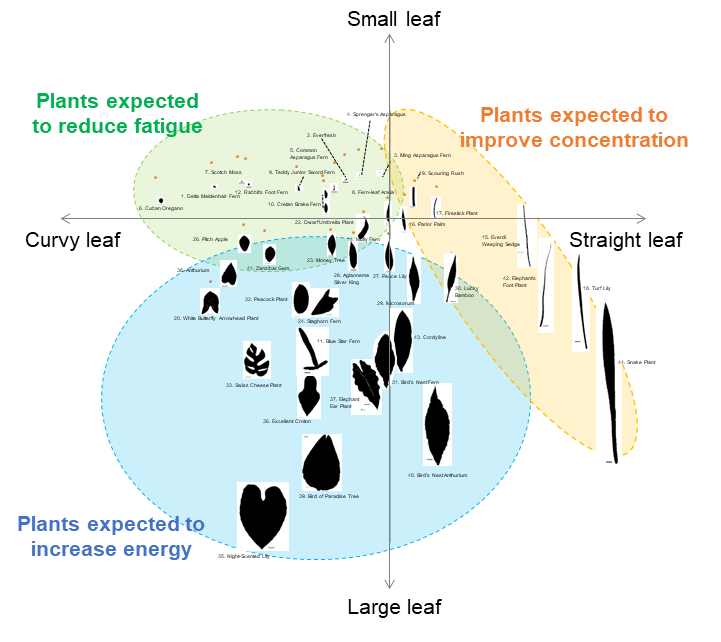
Message from joint research partner
Shotaro Suzuki,
Pasona Panasonic Business Service Co., Ltd.
COMORE BIZ Department Business Planning Team Manager
About two-and-a-half years ago, Toyota approached us about participating in a joint research project, and I remember thinking that our goals were the same. We are focusing on biophilic design5 to approximate the natural environment in working and living spaces, which PBS calls “The Right Place”6 In this way, we hope to apply the findings of this research toward the realization of a society where as many people as possible can live fulfilling based on mental and physical well-being.
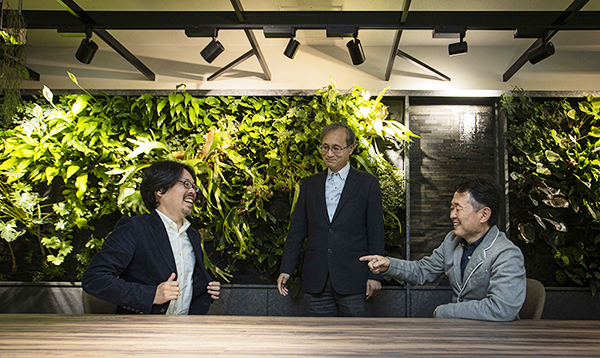
Participants in interview (from right):
Chikara Ohto, Ph.D. (Group Manager and Chief Officer, Genki-Kûkan™ Research Project)
Masayoshi Muramatsu, Ph.D. (Professional Partner and styling/design, Genki-Kûkan™ Research Project)
and Kenro Tokuhiro, Ph.D. (Project Manager, plant classification and visual research, Genki-Kûkan™ Research Project. On temporary assignment from TCRDL)
Related information
- 1
- “Joint research with Toyota Motor Corporation to study the effects on humans of spaces where people and plants coexist” (Pasona Panasonic Business Service project) (Japanese Only)
- 2
- “Research into biophilic spaces to improve well-being (Part 1): An overview of the research and creation of biophilic space laboratories” (Presentation #40037, 2020 Annual Convention,Architectural Institute of Japan) (Japanese Only)
- 3
- “Research into biophilic spaces to improve well-being (Part 2): An evaluation of plants, from measuring shapes to sensory evaluation” (Presentation #40038, 2020 Annual Convention, Architectural Institute of Japan) (Japanese Only)
- 4
- Patent application: 2020-123168 “Plant classification system and plant selection system”
- 5,6
- COMORE BIZ website:https://www.pasona-pbs.co.jp/comorebiz/ (Japanese Only)
Contact Information (about this article)
Frontier Research Center
- Email:
- xr-probot@mail.toyota.co.jp✉
